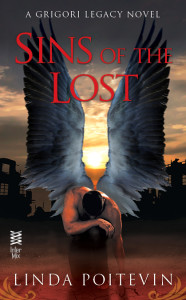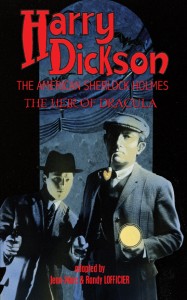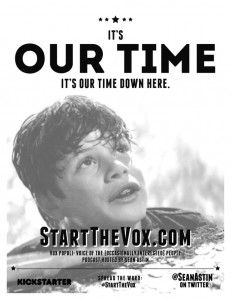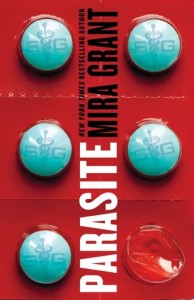Today’s Pride Month interview is with musician, designer, and memoirist David B. Roundsley:
Hi, David! I hope you’re staying safe and healthy during the current pandemic lockdowns. What are you doing to stay creatively motivated in these unusual times?
Hello Anthony. We’re definitely staying safe. We generally work from home, so there were no big shifts there, but I found my productivity and creativity were suddenly in high gear without much prompting.
Since June is Pride Month, I have to ask: how has being gay influenced or informed your art/craft?
Knowing I was gay from a very early age (and knowing it was neither approved of and under no circumstances ever discussed) definitely influenced me and my art. Being born in Southern California at that point in time, there was definite pressure to conform and not stand out. My earliest creative efforts were in art: oil painting, watercolors, pen and ink. Very bland. After moving to the bay area in my teen years and seeing the self-assurance and bravery of much of the gay community living their lives openly showed me a path that you don’t have to hide in the shadows or pretend that you’re something you’re not.
The real turning point was the late 70’s collision of gay pride / dance music / punk and the whole D.I.Y. (Do It Yourself) ethos where people were allowed to overlap in areas that might be discordant or seemingly incompatible. While going to see gay cabaret and the disco scene, I was also a regular at Winterland (there were weeks where I was there six out of seven nights) seeing everyone from Blue Öyster Cult, KISS, Bowie, Styx, Judas Priest on through to the Sex Pistols combusting. At the time it would seem like the hard-rock part didn’t mesh, but now with historical hindsight, there was a lot of gay subtext lurking there.
What is your process like for creating a Munich Syndrome album? Has it changed at all over the years?
The first era of Munich Syndrome was two synths, a drum machine, a mixing board and a Tascam PortaStudio. I’d generally play the bass part on one keyboard, melody or chords on the other, and set up a rhythm. I played it live, and then would mix things down, to open more tracks. This was time consuming and painstaking, but it always fell a bit short of what I wanted it to be.
The second era worked much better. I started out with ProTools and was making some headway when an acquaintance suggested Logic, saying it might suit what I was doing better. It was a much better fit.
My creative process for the most part is to go into the studio with no preconceptions. I fail miserably every time I sat down and said, “I’m going to do a “fill-in-the-blank” song”. If I had it in my mind to do a dance song, more often than not, I’d end up with something atmospheric, downtempo and significantly slower. The same when I sat down to do something introspective. Now I just start exploring sounds, playing with tempos and beats and let them take me where they want me to follow.
You’ve recently completed work on a memoir about your search to know more about your birth parents, which took some wild twists and turns. How did you approach writing the book? Was there anything you initially wanted to include but decided it was too much of a tangent?
I honestly never saw myself writing a proper book when I was younger. Ironically, my adoptive mother always used to say I’m a great storyteller and should write a book. If she wasn’t already deceased, I think this book would do her in. The search for my birth parents was a fluke, but within 48 hours of starting, I was suddenly in quite deep. Several months in and talking to people, everyone started saying “oh, you should write a book about this. I’d read it.” I thought, “yeah, right.” About 8 years in (I just had the 13th anniversary of when this all started) I seriously thought about it and made some attempts. I started with a fairly straightforward retelling of my birth parent’s history. It felt clunky. It read like a very dry history book and I put it away. Well, not that dry, with the drugs, swinging, organized crime, a possible Zodiac link…
Around Christmas of 2017 I received a holiday card from the woman who got me started, who was incredibly helpful in providing me with information and introducing me to other sources. She kiddingly said, “I’m still waiting for the book”, so I decided it was “do-or-die” time.
Ultimately the only way I could really tell it was chronologically as it unfolded for me. So, there are a lot of jumps back and forth in time, but I think it makes sense. The only area I had to think about a tangent on was giving my disabled half-sister a chance to tell her story. It’s rather unorthodox and probably breaks most rules of literature, but I felt it gave substance to the story and an insight to who my birthfather was at that point in time.
I didn’t hold back too much and hopefully my conclusions are substantiated with the hundreds of hours of interviews and calls that took place over the last 13 years. I will say, some of the conclusions surprised me.
You’ve also created/curated a “soundtrack” of sorts to the book. Talk about that process a little bit, if you could.
This kind of ties back into the first question about creativity. At the start of the year, the book most definitely felt done. As we are nearing the point of launching a Kickstarter campaign, I thought doing a song for the book would be appropriate. The song “Bad Blood (The Ballad of a Bad Man)”, is a distillation of my birth father’s life, but also opened me up to stretching out musically. Munich Syndrome originated from the synth pop / electro new wave in the 80’s, but mentally, I never saw Munich Syndrome in strictly defined musical terms. My first stabs at music were teaching myself the blues on the piano. I felt the book had some David Lynch overtones, so for a few of the songs I anchored things in acoustic and electric guitar and went for a more cinematic feel in spots. At this point, I recognized some songs dating back to 2007 were written specifically about what I was going through with the journey and thought about a curated listening experience including past songs. But as I moved into this, I felt some of the older ones weren’t quite the right fit sonically, so I ended up remixing, re-recording and re-envisioning some of the tracks. Also, there was one piece of music, “Out of the Blue” from Alan Parson’s 1999 album, “The Time Machine”, that really resonated with me. It came up often while we were on the long drives out to Montana and beyond. The theme of the album was time travel and it was definitely something I was doing at the time. Much like the book, I felt the album was done, until I redid the ending of the book at the start of the year. I went back and added one more song, “Goodbye”, about letting go of expectations, the past and any pain or regret associated with it.
The book/soundtrack project will be on Kickstarter in the near future. Where can people go to be informed when the project launches? And where else can they find you and your work online?
This will be my first attempt at a Kickstarter campaign, and it’s not for the faint of heart. As we’re getting nearer to formally launching it, we’ve set up a page to subscribe on MailChimp: https://david-b-roundsley.mailchimpsites.com/
In the meantime my main website, which started out to be strictly about my graphic design work now is a central location for my art, music and the book: <https://dbrdesign.com/>
My music with Munich Syndrome is available on all major music websites and at BandCamp: https://munichsyndrome.bandcamp.com/
And lastly, my YouTube Channel for Munich Syndrome: https://www.youtube.com/user/munichsyndrome
I appreciate you including me in your interviews for Pride Month!!!
It was my pleasure!
David B. Roundsley has been involved in a wide array of artistic disciplines ranging from fine art (painting, pen & ink, watercolor), to graphic design, multi-media, writing, video, and music (composing and studio production) over the past 50 years. He has run an independent design company since 1994 as well as having held the Creative Director positions at GetSmart and Fast Find, and has released 11 albums under the moniker Munich Syndrome.



















